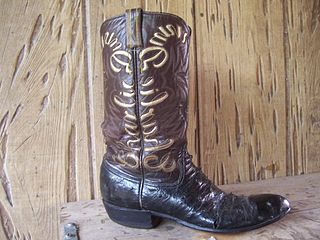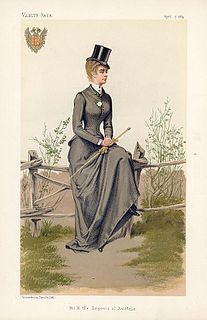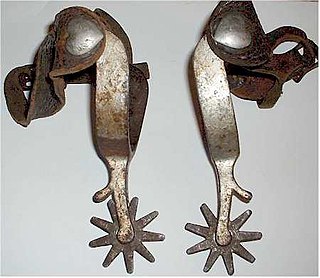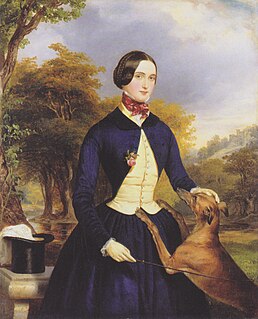 W
WAkubra is an Australian hat manufacturer. The company is associated with bush hats made of rabbit fur felt with wide brims that are worn in rural Australia. The term "Akubra" is sometimes used to refer to any hat of this kind, however the company manufactures a wide range of hat styles including fedora, homburg, bowler, pork pie, and trilby.
 W
WThe Boss of the Plains was a lightweight all-weather hat designed in 1865 by John B. Stetson for the demands of the American West. It was intended to be durable, waterproof and elegant. This design and the term "Stetson" eventually became all-but-interchangeable with what later became known as the cowboy hat.
 W
WThe bowler hat, also known as a billycock, bob hat, bombín (Spanish) or derby, is a hard felt hat with a rounded crown, originally created by the London hat-makers Thomas and William Bowler in 1849. It has traditionally been worn with semi-formal and informal attire. The bowler, a protective and durable hat style, was popular with the British, Irish, and American working classes during the second half of the 19th century, and later with the middle and upper classes in the United Kingdom, Ireland, and the east coast United States.
 W
WBreeches are an article of clothing covering the body from the waist down, with separate coverings for each leg, usually stopping just below the knee, though in some cases reaching to the ankles. The breeches were normally closed and fastened about the leg, along its open seams at varied lengths, and to the knee, by either buttons or by a drawstring, or by one or more straps and buckle or brooches. Formerly a standard item of Western men's clothing, they had fallen out of use by the mid-19th century in favour of trousers.
 W
WChaps are sturdy coverings for the legs consisting of leggings and a belt. They are buckled on over trousers with the chaps' integrated belt, but unlike trousers they have no seat and are not joined at the crotch. They are designed to provide protection for the legs and are usually made of leather or a leather-like material. Their name is a shortened version of the Spanish word chaparreras. Chaparreras were named after the chaparral from which they were designed to protect the legs while riding on horseback. Like much of western horse culture, the origin of chaparreras was in the south of Spain, from which it then passed on to the part of New Spain that later became Mexico, and has been assimilated into cowboy culture of the American west. They are a protective garment to be used when riding a horse through brushy terrain. In the modern world, they are worn for both practical work purposes and for exhibition or show use. Chaps have also been adopted for use on motorcycles, particularly by cruiser-style motorcycle riders.
 W
WThe chupalla is a traditional Chilean horseman's hat made of straw. Many people in rural areas of Central Chile use it as well. In addition, it is often used when dancing the cueca and during Chilean rodeos.
 W
WA cork hat is a type of headgear with corks strung from the brim, to ward off insects.
 W
WCowboy boots refer to a specific style of riding boot, historically worn by cowboys. They have a high heel that is traditionally made of stacked leather, rounded to pointed toe, high shaft, and, traditionally, no lacing. Cowboy boots are normally made from cowhide leather, which may be decoratively hand tooled, but are also sometimes made from "exotic" skins like alligator, snake, ostrich, lizard, eel, elephant, stingray, elk, buffalo, and so on.
 W
WThe cowboy hat is a high-crowned, wide-brimmed hat best known as the defining piece of attire for the North American cowboy. Today it is worn by many people, and is particularly associated with ranch workers in the western and southern United States, western Canada and northern Mexico, with many country, regional Mexican and sertanejo music performers, and with participants in the North American rodeo circuit. It is recognized around the world as part of Old West apparel.
 W
WAn equestrian helmet is a form of protective headgear worn when riding horses. This type of helmet is specially designed to protect the rider’s head in the event of falls from a horse, especially from striking a hard object while falling or being accidentally struck in the head by a horse’s hoof.
 W
WGaiters are garments worn over the shoe and lower pants leg, and used primarily as personal protective equipment; similar garments used primarily for display are spats. Originally, gaiters were made of leather or canvas. Today, gaiters for walking are commonly made of plasticized synthetic cloth such as polyester. Gaiters for use on horseback continue to be made of leather.
 W
WThe Jodhpur boot is an ankle boot or Chelsea boot designed as a riding boot with a rounded toe and a low heel. They originally fastened with a strap and buckle, but today the term also includes designs with straps that do not wrap entirely around the ankle and the elastic-sided design without a strap also known as Chelsea boots. A closely related riding boot design is called a paddock boot, particularly if modified to have a lace-up front. It is named after Jodhpur, the second-largest city in the Indian state of Rajasthan.
 W
WKnee pads or kneepads are protective gear worn on knees to protect them against impact injury from falling to the ground or hitting an obstacle, or to provide padding for extended kneeling.
 W
WA riding boot is a boot made to be used for horse riding. The classic boot comes high enough up the leg to prevent the leathers of the saddle from pinching the leg of the rider, has a sturdy toe to protect the rider's foot when on the ground and has a distinct heel to prevent the foot from sliding through the stirrup. The sole is smooth or lightly textured to avoid being caught on the tread of the stirrup in the event of a fall.
 W
WA riding habit is women's clothing for horseback riding.
 W
WA shadbelly is a type of riding coat worn in certain equestrian situations by fox hunting members, dressage riders, eventers, and occasionally by other hunt seat riders. Shadbellies are also standard attire for the show hack classes at certain breed shows in the United States and Canada.
 W
WA slouch hat is a wide-brimmed felt or cloth hat most commonly worn as part of a military uniform, often, although not always, with a chinstrap. It has been worn by military personnel from many different nations including Australia, Ireland, the United Kingdom, Canada, India, New Zealand, Southern Rhodesia, France, the United States, the Confederate States, Germany and many others. Australia and New Zealand have had various models of slouch hat as standard issue headwear since the late Victorian period.
 W
WA spur is a metal tool designed to be worn in pairs on the heels of riding boots for the purpose of directing a horse or other animal to move forward or laterally while riding. It is usually used to refine the riding aids (commands) and to back up the natural aids. The spur is used in many equestrian disciplines. Most equestrian organizations have rules in about spur design and use and penalties for using spurs in any manner that constitutes animal abuse.
 W
WStetson is a brand of hat manufactured by the John B. Stetson Company.
 W
WJohn Batterson Stetson was an American hatter, hat manufacturer, and in the 1860s, the inventor of the cowboy hat. He founded the John B. Stetson Company as a manufacturer of headwear. The company's hats are now commonly referred to simply as Stetsons.
 W
WA stock tie, or stock, is a style of neck wear. Originally a form of neck-cloth that was often stiffened and usually close-fitting, formerly worn by men generally, but post-nineteenth century only in use in military uniforms. Another type of stock is worn by certain clergy and consists of black silk or other fabric, that falls over the chest and is secured by a band around the neck. Equestrians wear a stock tie around the neck when dressed formally for a hunt or certain competitive events. Most equestrian competition rules require it to be white. It is mandated attire for use in dressage and the dressage phase of eventing. Use of the stock tie also is seen in show jumping and fox hunting. The stock tie continues to be in fashion for equestrians.
 W
WA top hat is a tall, flat-crowned hat for men traditionally associated with formal wear in Western dress codes, meaning white tie, morning dress, or frock coat. Traditionally made of black silk or sometimes grey, the top hat emerged in Western fashion by the end of the 18th century. Although it declined by the time of the counterculture of the 1960s, it remains a formal fashion accessory. A collapsible variant of a top hat, developed in the 19th century, is known as an opera hat.